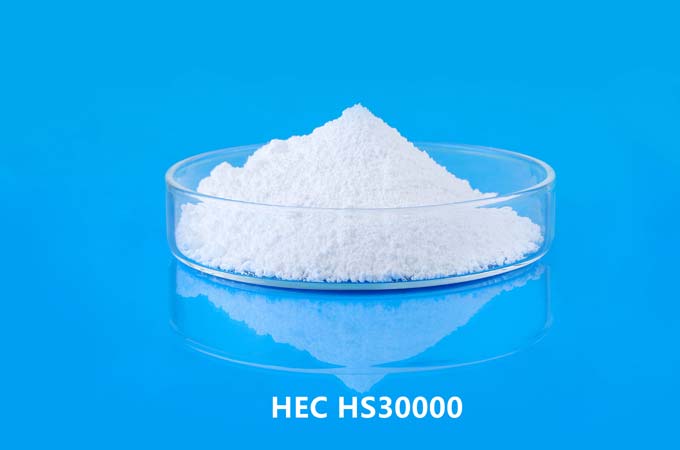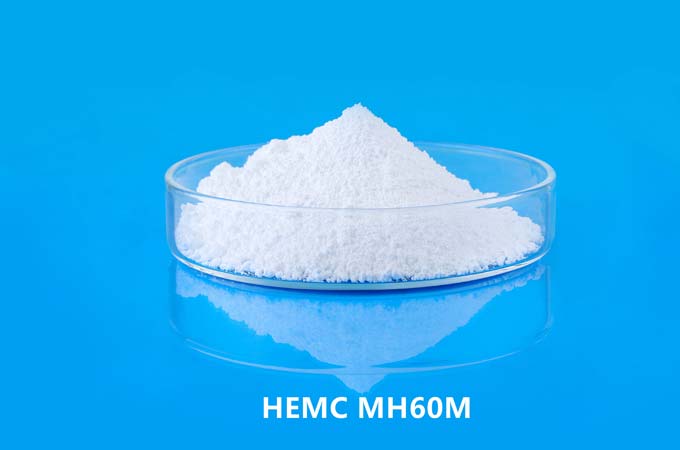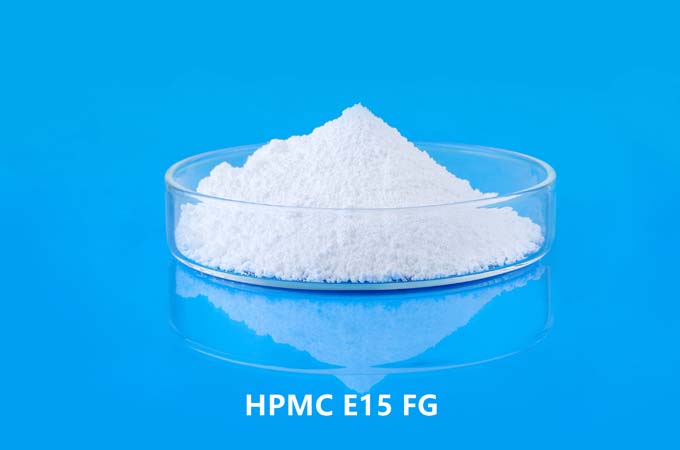1. For water latex paint:
As a protective colloid, HEC can be used in vinyl acetate emulsion polymerization to improve the stability of the polymerization system in a wide range of pH values. Additives such as pigment fillers are used in the manufacture of finished products to evenly disperse, stabilize and provide thickening. It can also be used as a dispersant for suspension polymers such as styrene, acrylate, and propylene. Used in latex paint can significantly improve thickening and leveling performance.
2. Oil drilling:
HEC is used as a thickener in various muds required for drilling, well setting, cementing and fracturing operations, so that the mud can obtain good fluidity and stability. Improve the mud carrying capacity during drilling, and prevent a large amount of water from entering the oil layer from the mud, stabilizing the production capacity of the oil layer.
3. For building construction and building materials:
Because of its strong water retention capacity, HEC is an effective thickener and binder for cement slurry and mortar. When it is mixed into mortar, it can improve fluidity and construction performance, and can prolong the water evaporation time and prevent cracks in the initial stage of concrete. It can significantly improve its water retention and bonding strength when used for plastering plaster, bonding plaster, and plaster putty.
4. Used in toothpaste:
Due to its strong resistance to salt and acid, HEC can ensure the stability of the toothpaste paste. In addition, toothpaste should not be dried due to its strong water retention and emulsifying ability.
5. Used in water-based ink, HEC can make the ink dry quickly and impermeable.
6. In addition, HEC is also widely used in textile printing and dyeing, papermaking, daily chemicals, etc.
Hydroxyethyl Cellulose (HEC) Uses
Hydroxyethyl cellulose (HEC) can effectively suspend solid poisons in water-based sprays.
When HEC is used in spraying operations, it can play the role of adhering the poison to the leaves; HEC can be used as a thickener for spray emulsions to reduce drug drift, thereby increasing the use effect of foliar spraying.
HEC can also be used as a film-forming agent in seed coating agents; as an adhesive in the recycling of tobacco leaves.
HEC can be applied in gypsum, cement, lime and mortar systems, tile paste and mortar. In cement components, it can also be used as retarder and water retention agent. In the surface treatment of wallboard work, it is used in the preparation of latex, which can pre-treat the surface and relieve the pressure of the wall, so that the effect of painting and surface coating is better; it can be used as a thickener for wallpaper glue.
HEC can improve the performance of gypsum mortar by increasing the hardening and spreading time. In terms of compressive strength, torsional strength and dimensional stability, HEC has better effects than other celluloses.
HEC is an effective film former, binder, thickener, stabilizer and dispersant in shampoos, hair sprays, neutralizers, hair conditioners and cosmetics. Its thickening and protective colloid properties can be used in liquid detergent and solid detergent industries. HEC dissolves quickly at high temperature, which can speed up the production process and improve production efficiency. As we all know, the obvious feature of detergents containing HEC is that it can improve the smoothness and mercerization of fabrics.
HEC with a certain molar substitution degree can play a role in the process of catalyzing protective colloid polymerization; HEC can play a role in controlling the growth of polymer particles, stabilizing latex performance, low temperature and high temperature resistance, and mechanical shear resistance. Effect. During the polymerization of latex, HEC can protect the concentration of colloid within a critical range, and control the size of polymer particles and the degree of freedom of participating reactive groups.
HEC has viscosifying properties in processing and filling mud. It helps provide good low solids mud with minimal damage to the wellbore. Mud thickened with HEC is easily degraded into hydrocarbons by acids, enzymes or oxidants and can recover oil to a minimum.
In cracked mud, HEC can play the role of carrying mud and sand. These fluids are also easily degraded by the above acids, enzymes or oxidizing agents.
HEC can be used to prepare ideal low solid phase drilling fluid, which provides greater permeability and better drilling stability. Its fluid-inhibiting properties can be used in the drilling of hard rock formations, and it is also suitable for drilling in collapsed or slide-slumped formations.
In the operation of adding cement, HEC reduces the friction of the pore-pressed cement slurry, thereby minimizing the damage to the structure caused by the loss of water.
Emulsion paint containing HEC components has the properties of fast dissolution, low foam, good thickening effect, good color expansion and more stability. Its nonionic nature helps to stabilize over a wide pH range and allows a wide formulation latitude.
The more superior performance of the XT series products is that the thickener is added to the water at the beginning of the pigment grinding to control the hydration.
High-viscosity grades XT-20, XT-40, and XT-50 are mainly developed and used in the production of water-soluble latex paints, and the dosage is smaller than other thickeners.
HEC can be used as a polishing agent for paper and board and as a protective glue for inks. HEC has the advantage of being independent of paper size in printing, and can be used for printing of high-quality images. At the same time, it can also reduce costs due to its low surface permeability and strong gloss.
It can also be applied to any size paper or cardboard printing or calendar printing. In paper sizing, its usual dosage is 0.5 ~ 2.0 g/m2.
HEC can increase the water retention performance in the color of the paint, especially for the paint with a high proportion of latex.
In the papermaking process, HEC has other superior properties, including compatibility with most gums, resins and inorganic salts, instant solubility, low foam, low oxygen consumption and the ability to form a smooth surface film.
In ink manufacturing, HEC is used in the production of water-based copying inks, which can dry quickly and have good color diffusion without sticking.
HEC has been used for sizing and dyeing of yarn and fabric materials for a long time. This glue can be washed away from the fiber by washing with water. In mixing with other resins, HEC can be more widely used in fabric treatment, it is used as a forming agent and binder in glass fiber, and as a modifier and binder in leather paste.
Adhesives thickened with HEC are pseudoplastic, that is, they thin out under shear, but quickly return to high viscosity control and improve print clarity.
HEC can control the release of moisture and allow it to flow continuously on the dyeing roller without adding adhesive. Controlled water release allows more open time for better filler containment and better tacky film formation without significantly increasing drying time.
At a concentration of 0.2% to 0.5% in solution, HEC XT-4 can improve the mechanical strength of non-woven adhesives, reduce wet cleaning on wet rolls, and increase the wet strength of the final product.
HEC XT-40 is an ideal adhesive for printing and dyeing of non-woven fabrics, and can obtain clear and beautiful images.
HEC can be used as a binder for acrylic coatings and as an adhesive for non-fabric processing. It is also used as a thickener for fabric primers and adhesives. It is non-reactive with fillers and remains effective at low concentrations.
In carpet dyeing, such as Kusters continuous dyeing system, few other thickeners can match the thickening effect and compatibility of HEC. Due to its good thickening effect, easy solubility in various solvents, low impurity content, does not interfere with the absorption of dyes and the diffusion of colors, making printing and dyeing free from insoluble gels (this insoluble gels can cause spots on fabrics) and Homogeneity limits for high technical requirements.
Main Performance Characteristics of HEC
Thickening
Hydroxyethyl cellulose (HEC) is an ideal thickener for paints and cosmetics. In practical application, the combination of its thickening property, suspending property, safety, dispersibility and water retention will produce more ideal effect.
Pseudoplasticity
Pseudoplasticity is the property that the viscosity of the solution decreases with the increase of the rotational speed. The latex paint containing HEC is easy to apply with a brush or roller and can increase the smoothness of the surface, which can also increase work efficiency; the shampoo containing HEC has good fluidity and is very viscous, easy to dilute, and easy to disperse.
Salt tolerance
HEC is very stable in high-concentration salt solution and will not decompose into ionic state. Applied in electroplating, it can make the surface of plated parts more complete and brighter. More noteworthy is the application of latex paints containing borates, silicates and carbonates, and still has good viscosity.
Film forming
The film-forming property of HEC can be applied in many industries. In papermaking operations, coating a glazing agent containing HEC can prevent oil penetration and can be used to prepare solutions for other aspects of papermaking; in the textile process, HEC can increase the elasticity of fibers and reduce mechanical damage to them . During fabric sizing and dyeing and finishing, HEC can act as a temporary protective film, and when its protection is not needed, it can be washed away from the fiber with water.
Water retention
HEC is beneficial to keep the water in the system in an ideal state. Because a small amount of HEC in the aqueous solution can achieve a good water retention effect, which reduces the water demand for the system when batching. Without water retention and adhesion, cement mortar will reduce its strength and cohesion, and clay will also reduce its plasticity under certain pressure.
Main Purpose of Hydroxyethyl Cellulose
1. As a thickening (dispersing) agent, hydroxyethyl cellulose can be used as a protective colloid in vinyl acetate emulsion polymerization to improve the stability of the polymerization system within the pH value range, and evenly disperse pigments, fillers, and additives in the manufacture of finished products. Stabilizes and provides thickening action. It can also be used as a dispersant for styrene, acrylate, and propylene suspension polymers. When used in latex paint and real stone paint, it can significantly improve the thickening property and the leveling property of the paint.
2. Hydroxyethyl cellulose is used as a thickener and water loss reducing agent in oil exploitation, so that the working fluid in oil exploitation has good fluidity and stability, improves the carrying capacity of drilling fluid, prolongs the service life of drill bits, and prevents large The filtrate enters the oil layer to stabilize the production capacity of the oil field; as a gelling agent for fracturing fluid, it can increase oil and gas production, prolong the life of the oil well, and has the characteristics of rapid and thorough gel breaking, low residue content (1%) and low damage to rock formations (≤25% )Features.
3. Used in building construction and building materials. Because of its strong water retention capacity, hydroxyethyl cellulose is an effective thickener, binder and retarder for cement slurry and mortar, which can improve the fluidity and construction performance of cement and mortar and delay Evaporation of water increases the initial strength of concrete and prevents cracks from appearing. It has excellent performance in plastering gypsum, bonding gypsum, and water-resistant putty.
Uses: Generally used as thickener, protective agent, adhesive, stabilizer and additive for preparing emulsion, jelly, ointment, lotion, eye clearing agent, suppository and tablet, also used as hydrophilic gel and skeleton Materials, preparation of matrix-type sustained-release preparations, and can also be used as a stabilizer in food, etc.
 English
English 日本語
日本語 français
français Deutsch
Deutsch Español
Español italiano
italiano русский
русский português
português العربية
العربية Türkçe
Türkçe Nederland
Nederland



